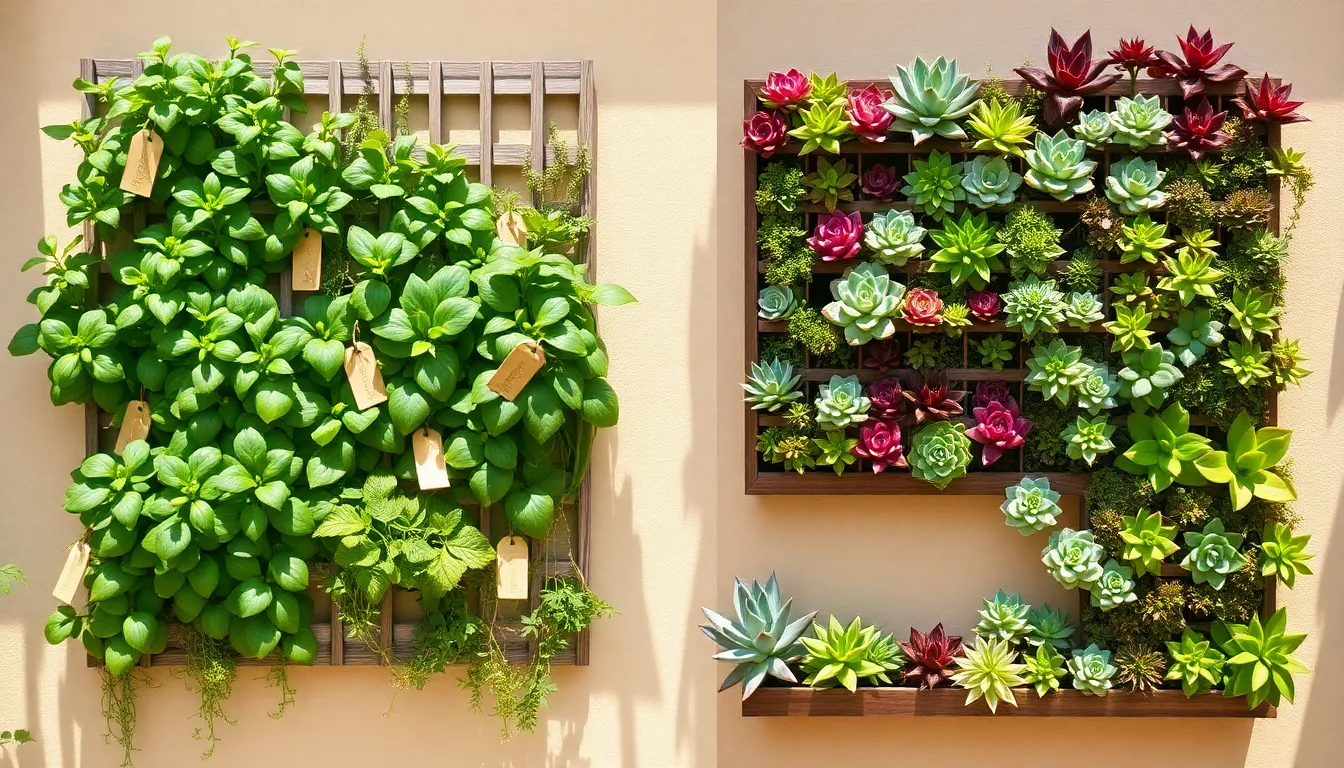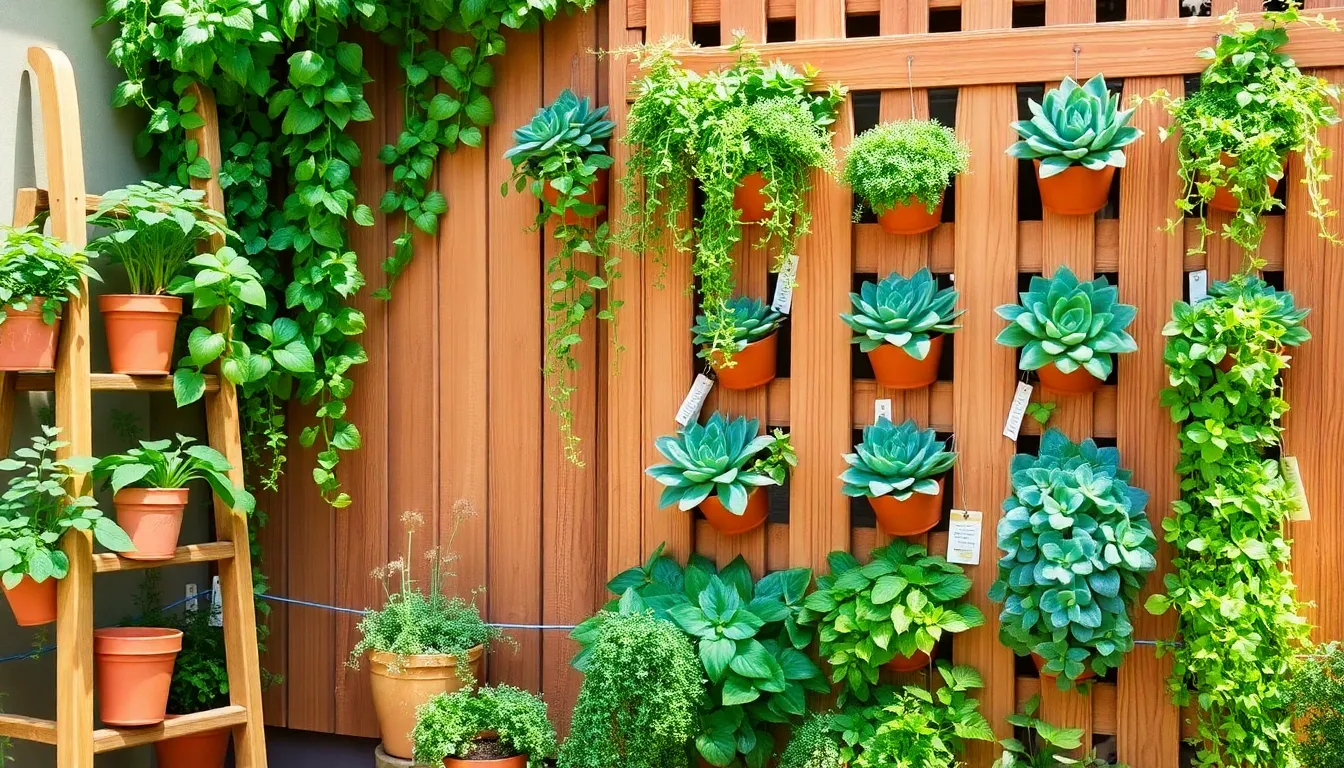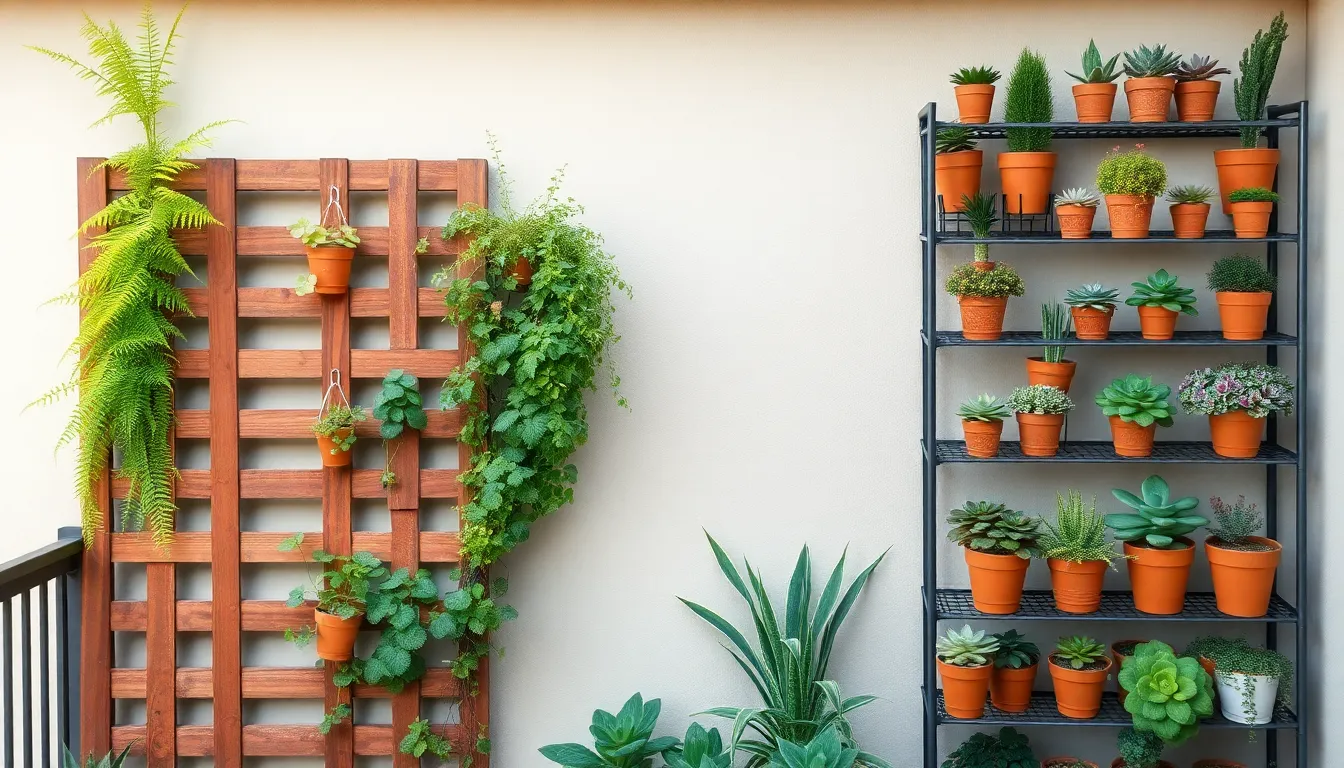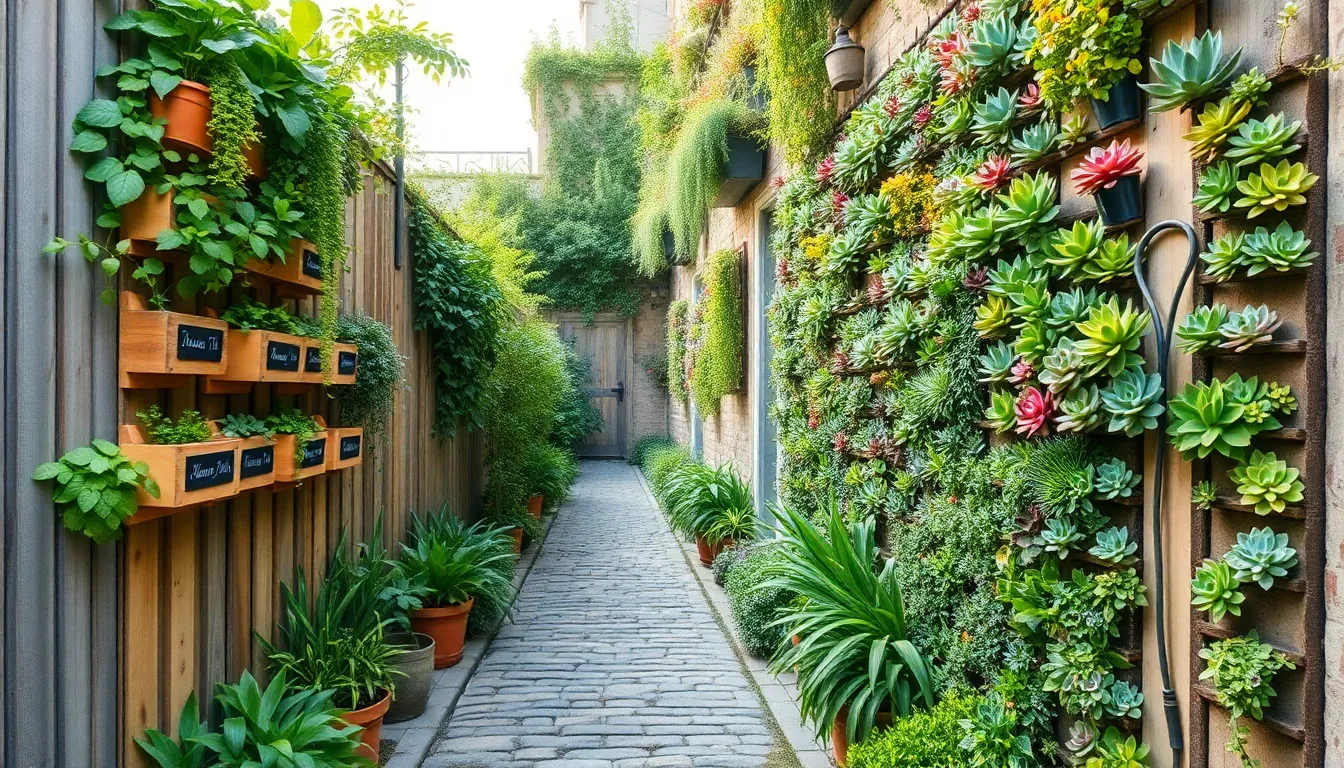Imagine transforming even the smallest corner of your home into a lush, vibrant oasis. Vertical gardening offers a delightful solution for those who yearn to infuse their spaces with greenery but find themselves limited by traditional floor space. Whether you’re a novice with dreams of a greener thumb or a seasoned gardener seeking fresh ideas, the world of vertical gardens is brimming with potential. This innovative approach not only maximizes your available space but also brings a refreshing twist to conventional gardening practices.
Embarking on a vertical gardening journey can be as simple or as elaborate as you desire, making it an ideal venture for both beginners and experts alike. With our curated list of 10 easy vertical garden inspirations, you’ll discover creative possibilities to suit any skill level and style preference. From repurposing everyday items to integrating cutting-edge designs, each idea is crafted to inspire and empower you to cultivate your own slice of paradise. As we delve into these inspirations, you’ll gain insights into practical techniques and discover the joy of watching plants flourish in unexpected ways.
In this article, you’ll learn how to transform plain walls into living artworks, create striking focal points, and even grow your own herbs and vegetables vertically. The beauty of vertical gardening lies not just in its aesthetic appeal but also in its ability to bring nature closer to our daily lives. As you explore these inspirations, you’ll find that gardening is not only accessible but also a deeply rewarding pursuit, no matter the size of your canvas. So let’s embark on this green journey together, and unlock the endless possibilities that vertical gardening has to offer.
Choosing Vertical Garden Structures
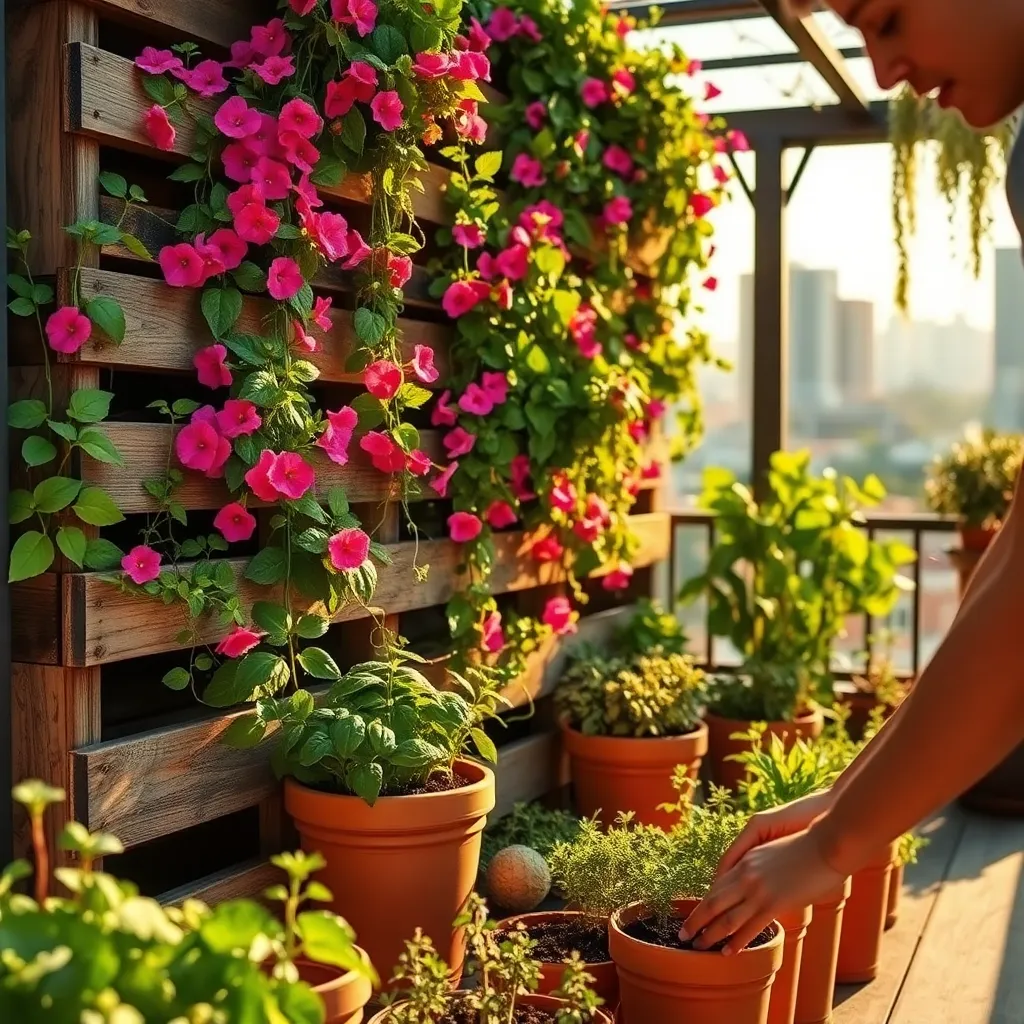
When choosing vertical garden structures, consider the available space and light conditions to ensure your plants thrive. For beginners, a simple trellis or wall-mounted planter is an excellent starting point, as they are easy to install and maintain.
Another option is using hanging planters, which can be ideal for small spaces or balconies. Ensure that you select lightweight containers and plants that are suitable for such setups, like herbs or succulents, which require minimal soil and watering.
Advanced gardeners might explore living walls, which can transform a blank space into a lush, green tapestry. These structures often require a drip irrigation system to maintain consistent moisture levels, especially if you’re growing water-loving plants like ferns or mosses.
When assembling your vertical garden, prioritize using a high-quality potting mix that retains moisture yet drains well to prevent root rot. Depending on your plant choice, consider adding a slow-release fertilizer to provide consistent nutrition throughout the growing season.
Best Plants for Vertical Growth
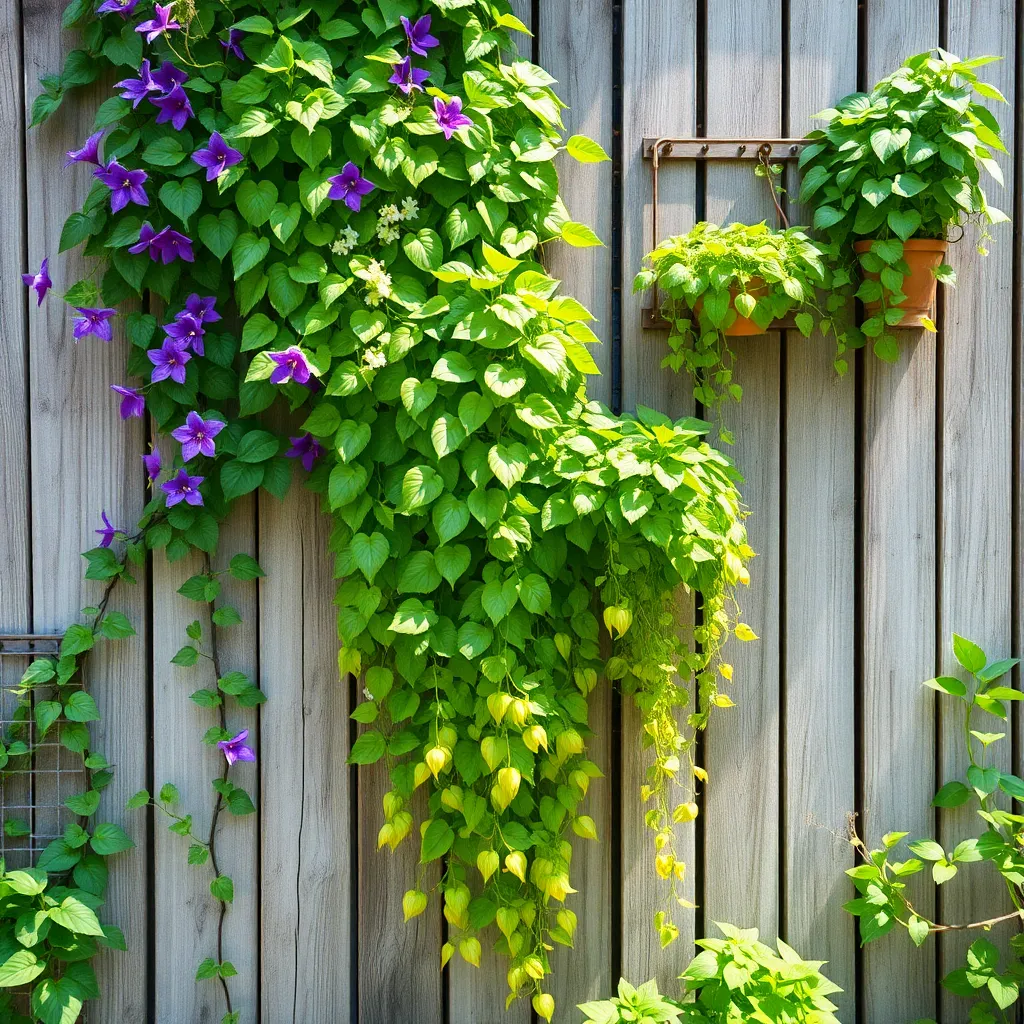
Vertical gardening offers a unique opportunity to maximize space by choosing plants that naturally grow upwards. Climbing plants such as beans, peas, and cucumbers are excellent choices for beginners, as they are easy to grow and provide a bountiful harvest. These plants thrive in well-draining soil and require consistent watering, especially during dry spells, to support their rapid vertical growth.
Consider adding vining flowers like morning glories or clematis to your vertical garden for a splash of color. These plants are not only visually appealing but also attract beneficial pollinators. Ensure they receive at least six hours of sunlight daily and provide a sturdy trellis or support structure to guide their growth upwards.
For those looking to add greenery indoors, trailing plants like pothos and philodendrons are ideal. These plants are low-maintenance and can adapt to a variety of light conditions, making them perfect for indoor vertical gardens. To encourage healthy growth, use a well-aerated potting mix and water when the top inch of soil feels dry.
If you’re seeking a more advanced planting option, consider using herbs such as rosemary, thyme, and basil in your vertical garden. These herbs not only provide culinary benefits but also thrive when planted vertically, as they enjoy good air circulation around their foliage. Regular pruning will promote bushier growth and prevent them from becoming leggy or sparse.
DIY Pallet Garden Ideas
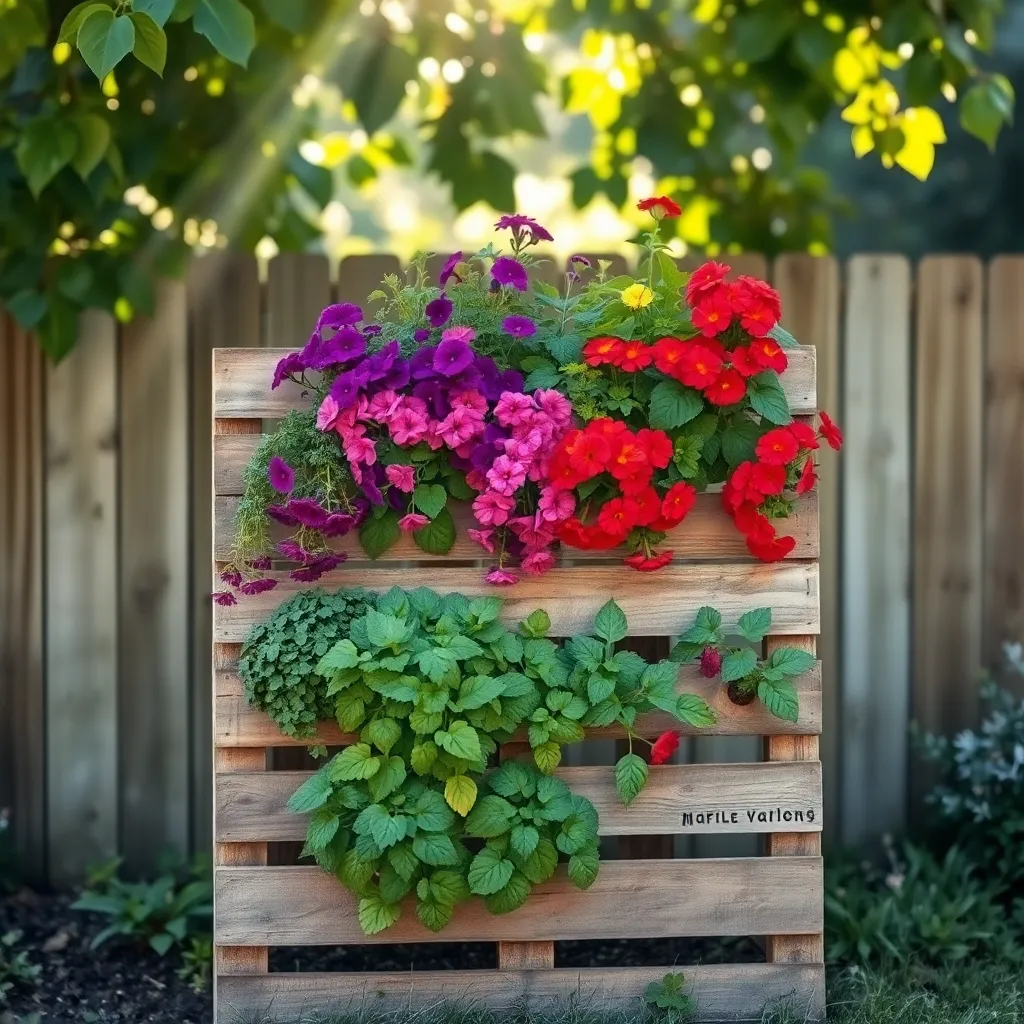
Using wooden pallets to create a vertical garden is an excellent way to repurpose materials and maximize space. Start by selecting a sturdy pallet that is free from chemical treatments, as these can harm your plants.
To prepare the pallet, secure a landscape fabric to the back and sides using a staple gun. This will help contain the soil and prevent it from spilling out when you water your plants.
For a successful pallet garden, fill it with a good-quality potting mix that retains moisture while allowing excess water to drain. Consider a mix that includes perlite or vermiculite to improve aeration and drainage.
Choose plants that thrive in vertical environments, such as herbs, succulents, or strawberries. Ensure each plant receives adequate sunlight by positioning the pallet in a location that gets at least six hours of sun daily.
Water your pallet garden regularly, especially during dry spells, but be careful not to overwater. An efficient way to water is by using a drip irrigation system which ensures even moisture distribution.
For those seeking a challenge, try incorporating a mix of annuals and perennials to enhance the visual appeal throughout the seasons. Regularly check for pests and diseases, and remove any affected plants promptly to maintain a healthy garden.
Wall-Mounted Planters Explained
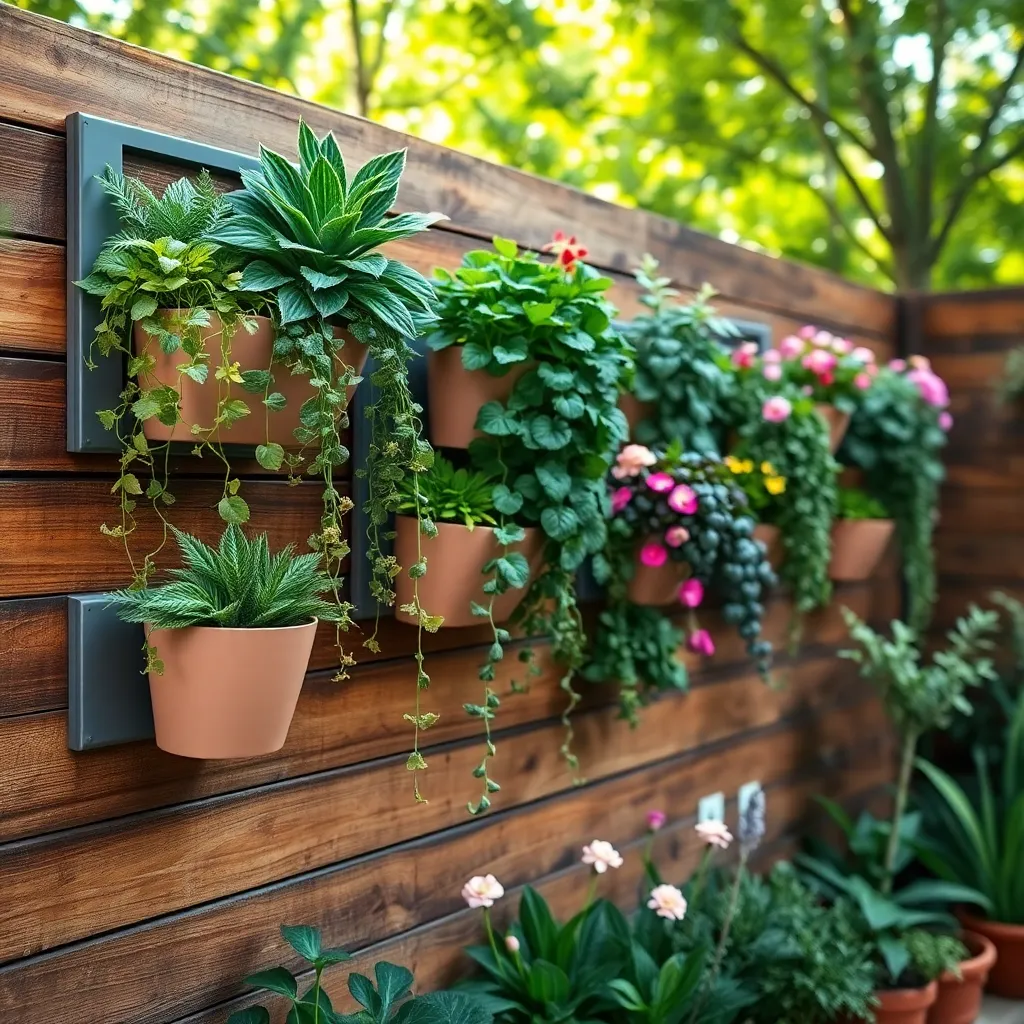
Wall-mounted planters are an excellent way to maximize space, especially in small gardens or urban settings. They allow you to create a lush, vertical garden by utilizing vertical surfaces such as walls or fences.
When selecting a wall-mounted planter, consider the material and drainage capabilities. Terracotta and ceramic planters are popular choices, but ensure they have drainage holes to prevent waterlogging.
Choose lightweight soil mixes designed specifically for container gardening. These mixes help with drainage and aeration, ensuring your plants’ roots remain healthy and thriving.
For a beginner-friendly approach, start with hardy plants like succulents or herbs. These plants require less frequent watering and can tolerate a range of lighting conditions, making them perfect for wall-mounted planters.
More advanced gardeners can experiment with trailing plants or ferns for a lush effect. Remember to mist the leaves regularly to maintain humidity, as wall-mounted planters can dry out quickly.
Using Trellises for Vegetables
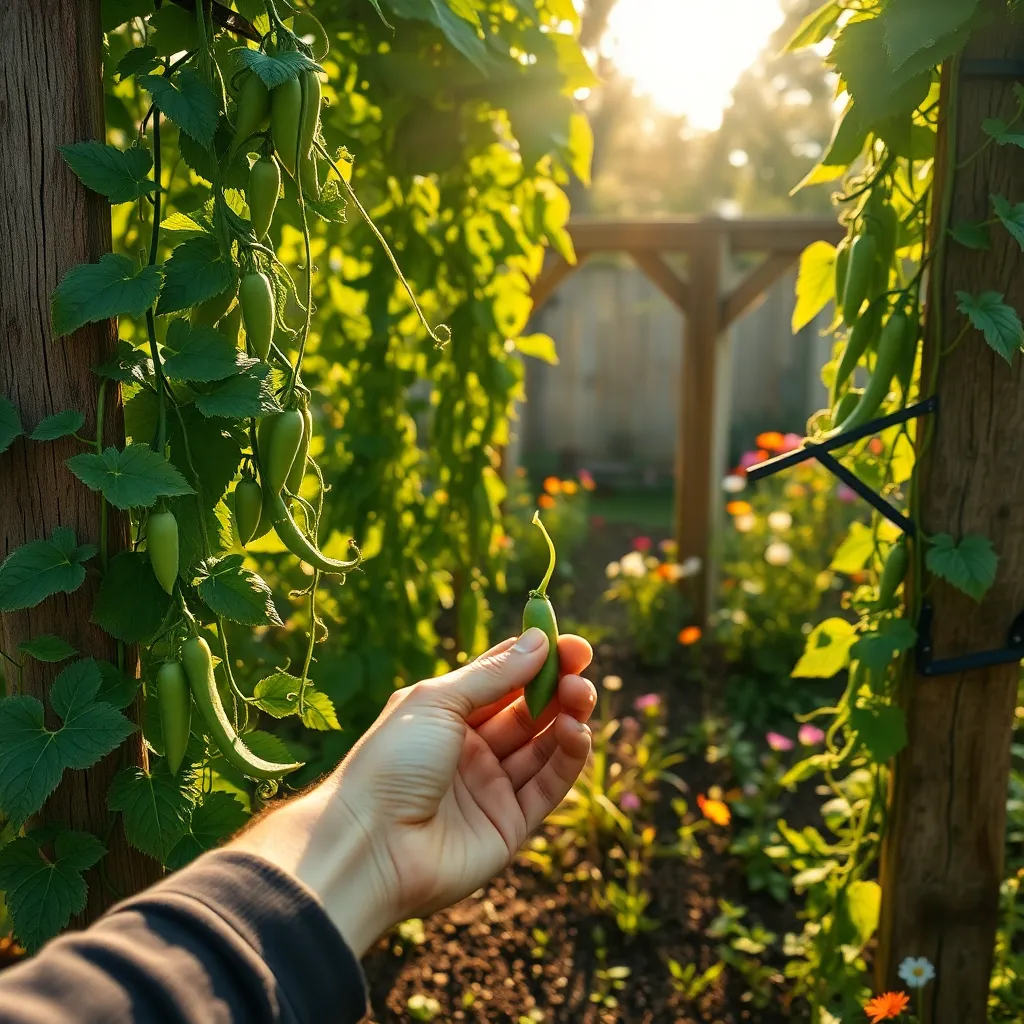
A trellis can transform your vegetable garden by maximizing vertical space and improving plant health. When choosing a trellis, ensure it’s sturdy enough to support your crops, especially heavy ones like tomatoes or cucumbers.
For beginners, start with easy-to-grow climbers such as peas or pole beans, which naturally seek vertical support. These plants benefit from a trellis as it increases air circulation, reducing the risk of fungal diseases.
Advanced gardeners can experiment with compact varieties of squash or melons, training them to grow vertically. Use soft ties or plant clips to gently secure vines to the trellis, preventing damage and ensuring even growth.
Consider the material of your trellis; options include metal, wood, or plastic, each with unique benefits. Metal trellises are durable and weather-resistant, while wooden ones blend seamlessly into natural settings.
Hanging Baskets for Small Spaces
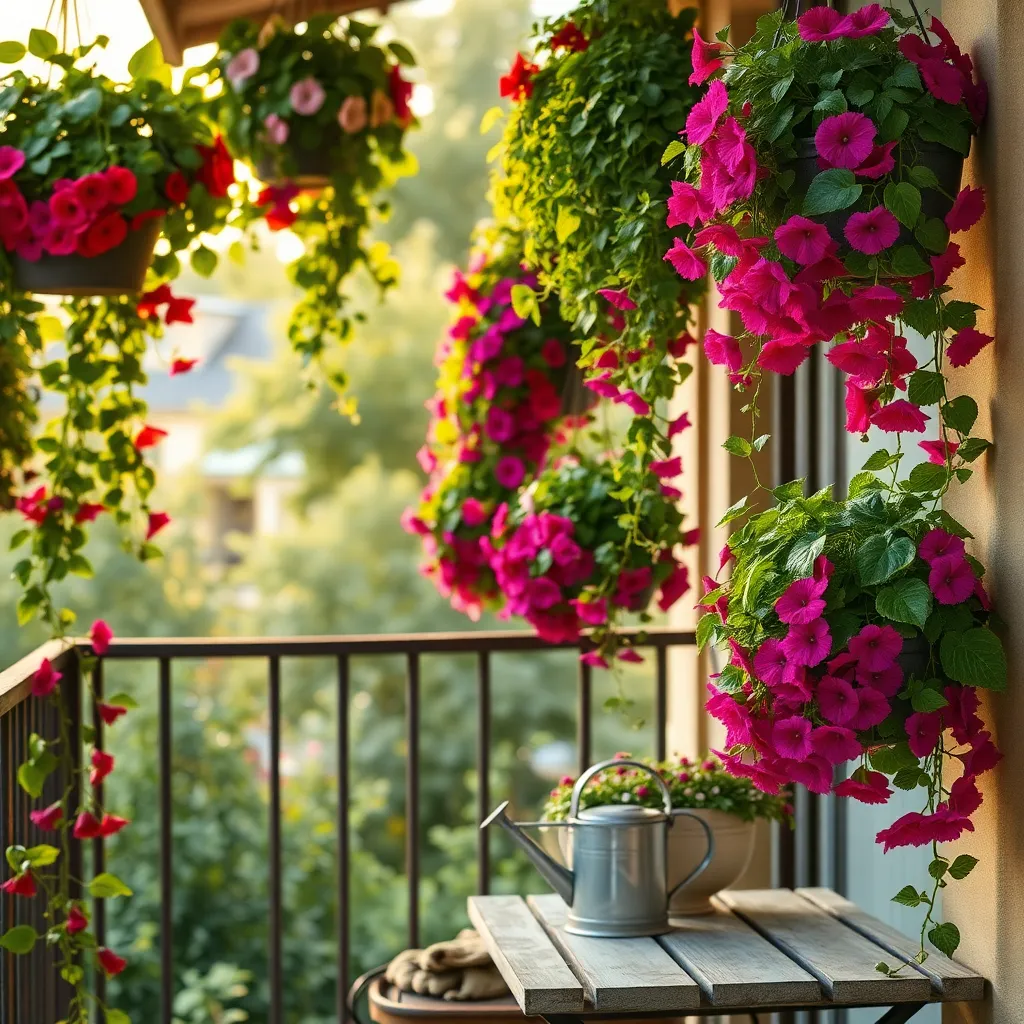
Transforming small spaces into lush green havens is easily achievable with hanging baskets. These versatile containers can be hung from ceilings, walls, or balconies, making them perfect for compact areas.
Choose lightweight baskets to ensure that your structures can support them without any damage. Materials like coir or moss liners are not only light but also retain moisture well, which is crucial for plant health.
When selecting plants, opt for varieties that thrive in confined spaces and partial shade, such as ferns, ivy, or trailing lobelia. Herbs like mint and thyme also do exceptionally well in hanging baskets, providing both beauty and culinary use.
To maintain your hanging basket garden, water them regularly as they tend to dry out faster than ground-level plants. Feed them with a balanced liquid fertilizer every two weeks to keep them thriving and lush throughout the growing season.
Hydroponic Systems for Vertical Gardens
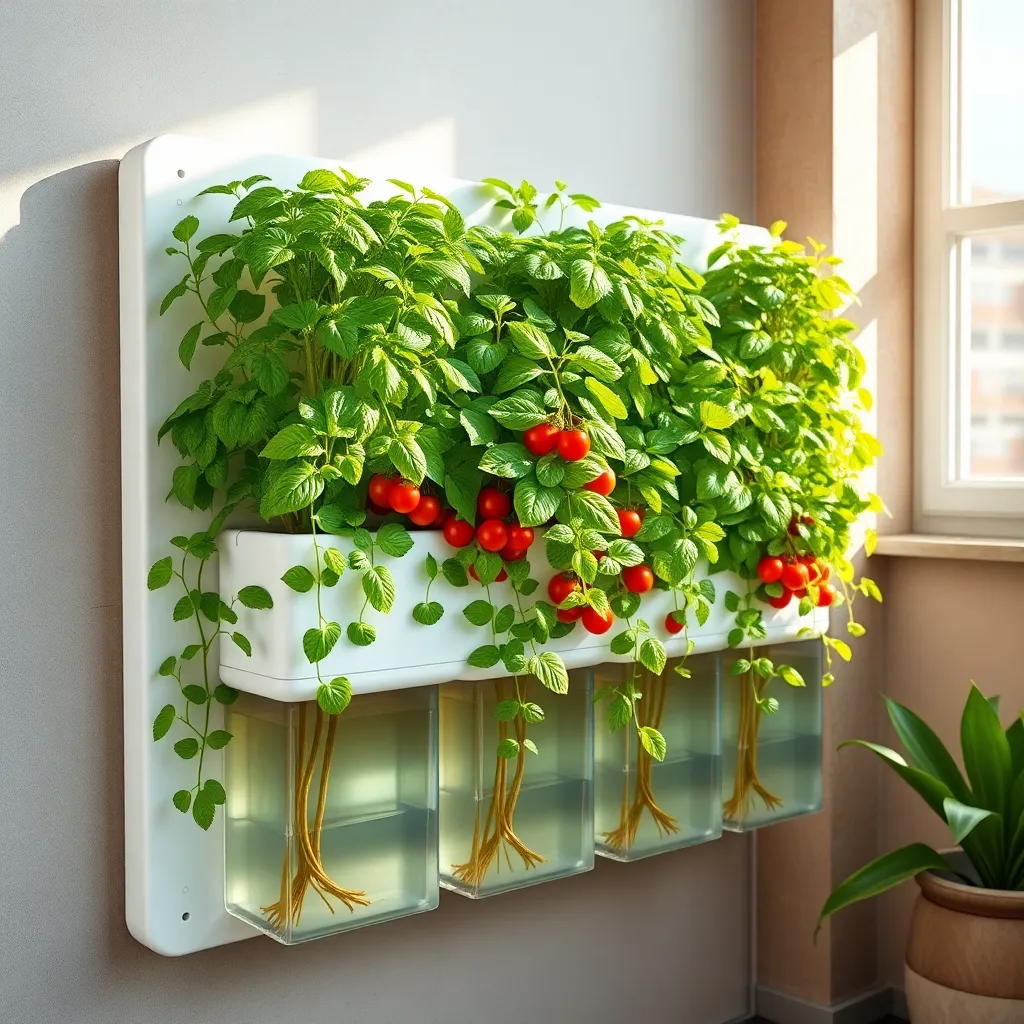
For those eager to maximize limited space, hydroponic systems for vertical gardens offer a highly efficient solution. These systems allow you to grow a variety of plants without soil, using a nutrient-rich water solution instead.
When setting up a hydroponic vertical garden, start by choosing a system that suits your space and needs. The most popular options include Nutrient Film Technique (NFT), Vertical Towers, and Aeroponics, each offering unique benefits for different plant types.
Ensure your plants receive adequate light, as this is crucial for their growth in a hydroponic setup. You might need to incorporate grow lights if your vertical garden is indoors or in a shaded area, ensuring your plants get at least 12-16 hours of light per day.
Maintaining the nutrient solution is key to a successful hydroponic system. Regularly check and adjust the pH levels, keeping them between 5.5 and 6.5, and replenish nutrients every two weeks to keep your plants thriving.
For beginners, starting with herbs like basil, mint, or lettuce is recommended, as they adapt well to hydroponic systems. As you gain confidence, consider experimenting with more challenging plants like tomatoes or strawberries, which require more attention but offer rewarding yields.
Creative Recycled Material Options
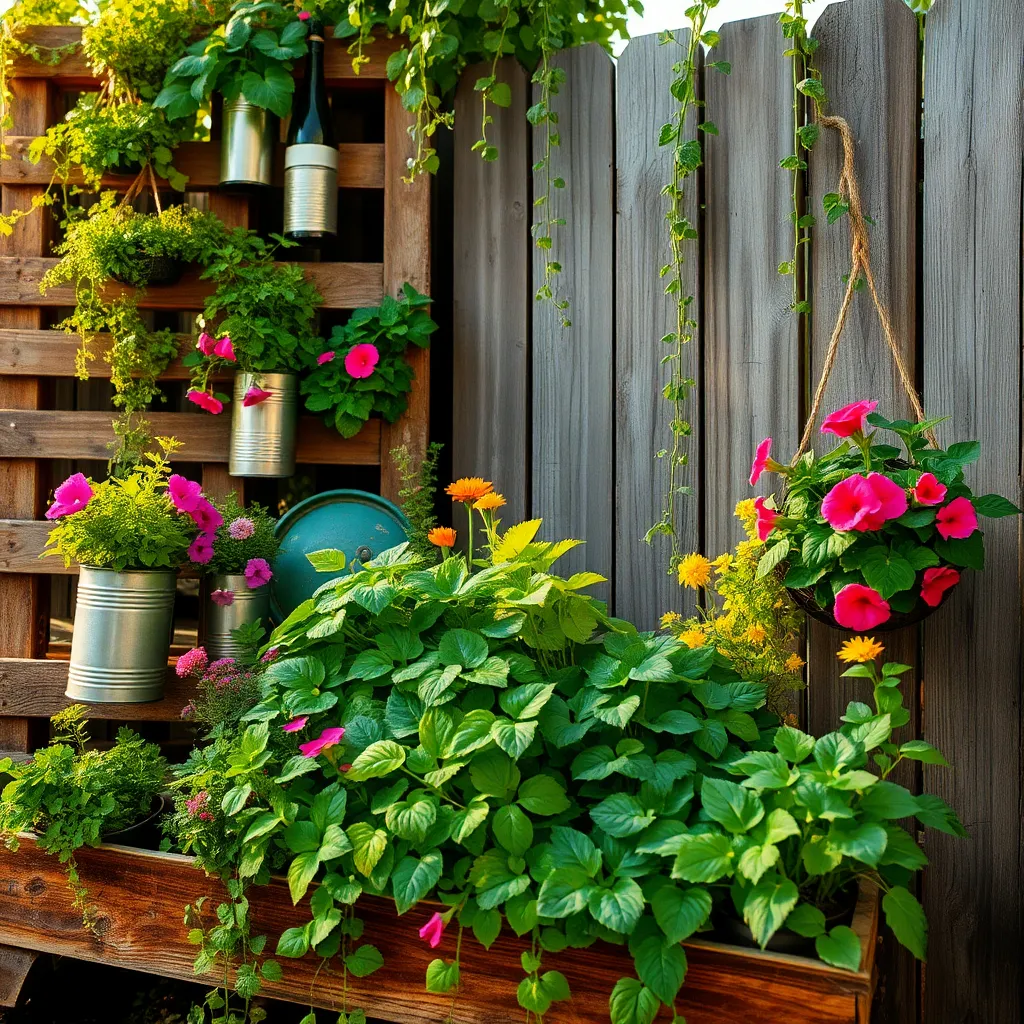
Vertical gardens offer a unique opportunity to incorporate recycled materials, making your gardening project both environmentally friendly and cost-effective. Consider using old wooden pallets, which can be stacked against a wall and filled with soil to grow herbs and small vegetables.
Bottles and cans can also be repurposed as planters by creating drainage holes and mounting them on a vertical frame. This method is particularly suitable for compact spaces, allowing you to grow plants like strawberries and succulents that require minimal soil depth.
For a creative twist, reuse discarded gutters by attaching them horizontally along a sturdy fence or wall. Fill them with a lightweight potting mix and plant shallow-rooted greens such as lettuce or spinach, ensuring they receive adequate sunlight and are watered regularly.
Advanced gardeners might consider constructing a living wall using a fabric pocket system made from old clothes or burlap sacks. This technique provides excellent drainage and aeration, ideal for herbs like basil and thyme, which thrive when their roots are slightly dry between waterings.
Maintenance Tips for Vertical Gardens
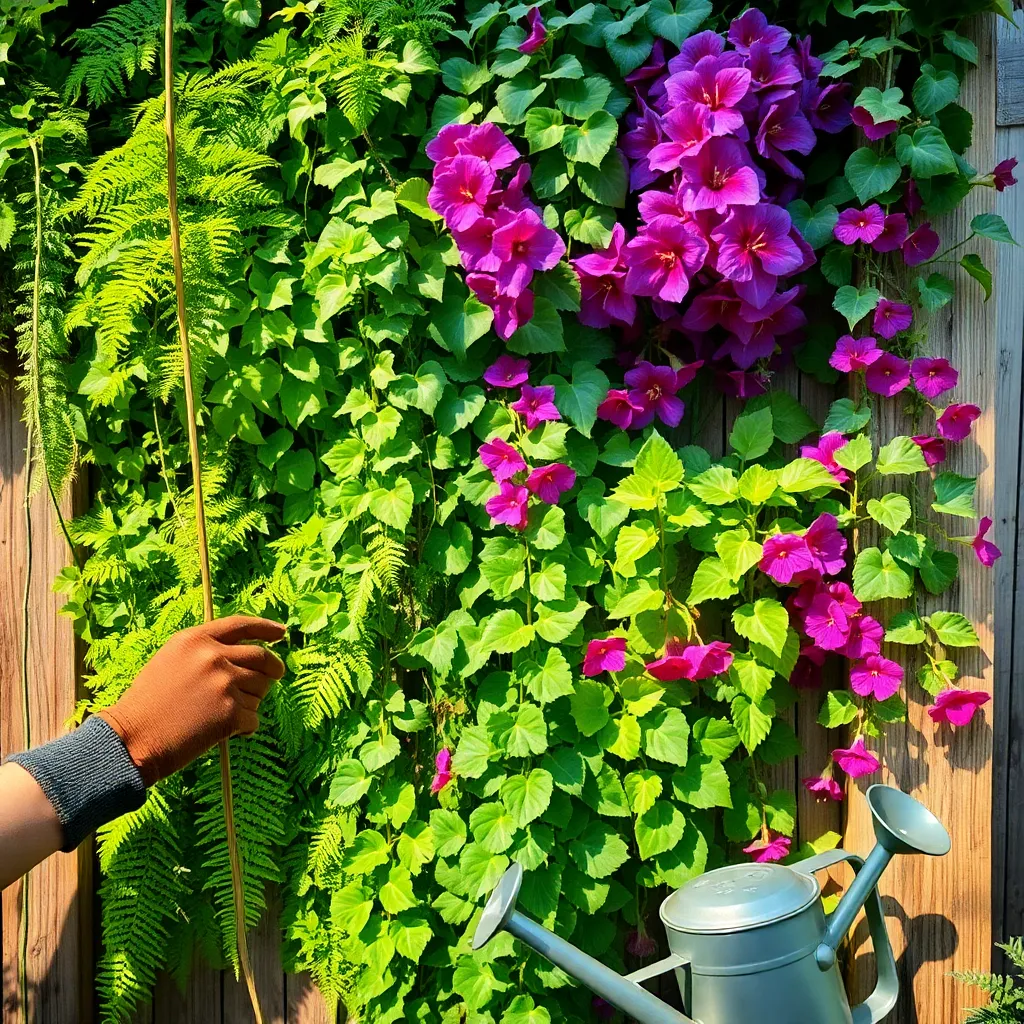
Proper maintenance is crucial for thriving vertical gardens. Regularly inspect your plants for signs of stress, such as wilting or discoloration, to address issues promptly.
To ensure healthy growth, provide your vertical garden with consistent watering. Check soil moisture levels frequently, as vertical setups often dry out quicker than traditional gardens.
Light is essential for plant health, so position your vertical garden where it receives adequate sunlight. For indoor setups, consider using grow lights to supplement natural light, ensuring your plants get at least 6-8 hours of light daily.
Fertilizing is important to maintain nutrient levels, especially in compact vertical arrangements. Apply a balanced liquid fertilizer every four to six weeks during the growing season to support vigorous growth.
Pruning and trimming are necessary to keep your vertical garden tidy and encourage new growth. Remove dead or diseased foliage to prevent pest infestations and improve air circulation.
Consider plant selection carefully; choose species suited to vertical growth and your environment. Opt for plants like herbs, succulents, or small flowering varieties that thrive in constrained spaces and require similar care.
Inspiration from Nature’s Designs
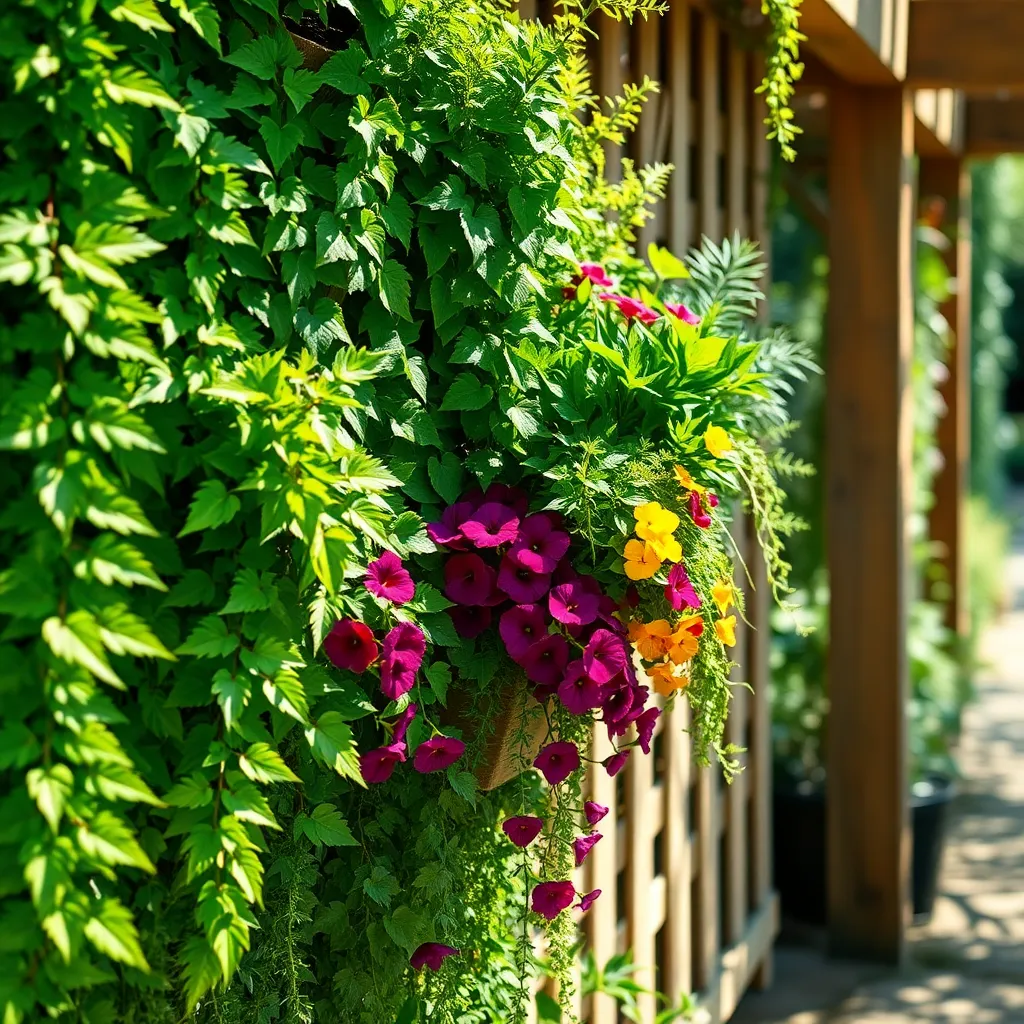
Nature provides some of the most ingenious designs that can be seamlessly incorporated into your vertical garden. By mimicking natural patterns, such as the way vines climb trees or how moss covers rocks, you can create a lush, thriving vertical space.
Consider using plants like English ivy or climbing hydrangea, which naturally grow upwards and can cover vertical structures with ease. Ensure they have a sturdy support system and are provided with soil that drains well, as these plants prefer to avoid waterlogged conditions.
Incorporating a variety of textures and colors can enhance the visual appeal of your vertical garden, much like a forest’s undergrowth. Mix plants with different leaf shapes such as ferns and hostas, which can thrive in shaded vertical gardens, providing a lush, layered look.
For gardeners seeking more advanced techniques, consider creating a living wall that imitates a natural cliff face. This involves using modular panels filled with a lightweight growing medium, ensuring they are regularly watered and fertilized to maintain plant health.
When selecting plants for this setup, choose species that naturally thrive in rocky environments, such as succulents and certain grasses. These plants are typically drought-tolerant, but still require regular misting to mimic the humidity they would naturally experience.
Conclusion: Growing Success with These Plants
As we’ve explored in “10 Easy Vertical Garden Inspirations,” nurturing a relationship is much like cultivating a thriving vertical garden. The ten key concepts—communication, trust, quality time, empathy, appreciation, shared goals, flexibility, conflict resolution, independence, and intimacy—serve as essential pillars for a flourishing partnership. Just as each plant requires care and attention to bloom, so too does each facet of a relationship.
To put these insights into action, I encourage you to choose one concept to focus on this week. Perhaps it’s setting aside uninterrupted time for your partner or practicing active listening during conversations. Small, intentional actions can lead to significant growth over time.
Don’t forget to save or bookmark this article as a valuable resource to revisit and refresh your relationship toolkit. In doing so, you’ll always have a guide to nurturing your connection and building a love that stands tall and resilient.
Remember, relationships are living entities that thrive on continuous care and adaptation. By embedding these principles into your daily life, you’re not just investing in your present but paving the way for a successful and fulfilling future together. Keep growing, and let love flourish.

